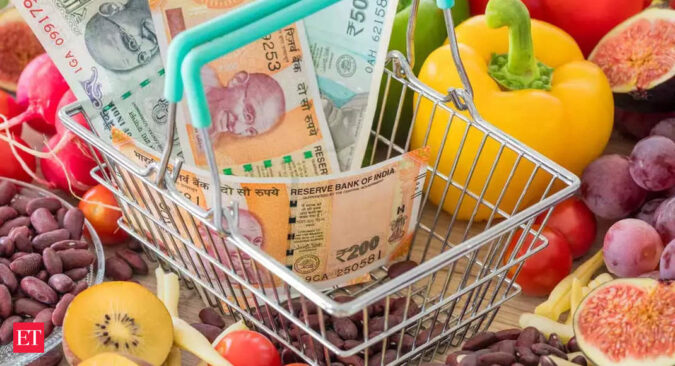The sequential inflation declined by 0.17 per cent. The inflation rate has remained above the Reserve Bank of India’s (RBI) tolerance band of 2-6 per cent for the second straight month.
The high inflation level can be attributed to rising food prices, which account for nearly 40 per cent of the Consumer Price Index (CPI) basket. Food inflation came in at 5.95 per cent in February.
Inflation rate for vegetables contracted marginally by 11.6 per cent against a contraction of 11.7 per cent in the previous month. Meanwhile, inflation rate for fuel and light declined to 9.90 per cent from 10.84 per cent in the month of January.
“February CPI inflation at 6.44 per cent while elevated is broadly in line with expectations. Cereals and milk inflation continues to be high while fruits inflation spiked up too in February. Core inflation at 6.1 per cent remains elevated and sticky with relatively high inflation across clothing and footwear, health, personal care and effects, and household goods/services. The RBI will remain hawkish in the April policy as inflation prints have spiked back over 6 per cent in January-February along with core inflation remaining sticky above 6 per cent. We continue to expect a 25 bps repo rate hike in the April policy,” said Suvodeep Rakshit, Senior Economist, Kotak Institutional Equities.
Higher inflation has been a concern for central banks across the world, including India, as the uncertain nature of the Russia-Ukraine war compounded supply-side disruptions in the post-pandemic world that was barely going through a nascent recovery from economic shocks.
The RBI is expected to keep inflation within a band of 2-6 per cent. It has been raising lending rates to control inflation. Earlier, in February, the RBI had delivered a quarter-percentage-point hike in the policy repo rate.The RBI had cut India’s inflation forecast for this fiscal year as the worst of price pressures were seen to be behind, but Governor Shaktikanta Das had flagged stickiness of the core inflation to be a matter of concern during its Monetary Policy Committee meeting on February 8.
The rising inflation levels are signaling a rate hike by the central bank. Another rate hike by the RBI may result in borrowing costs reaching a seven-year high, stated a Bloomberg report.
In an online session on ‘Growth resilience and sticky inflation’, DBS Group Research Executive Director & Senior Economist Radhika Rao said the RBI may hike interest rates by 25 basis points in April and maintain a hawkish bias as retail inflation is still high.
The RBI had forecast retail inflation for FY23 at 6.5 per cent and for Q4 at 5.7 per cent. Retail inflation for FY24 has been forecast at 5.3 per cent with Q1 at 5 per cent, Q2 at 5.4 per cent, Q3 at 5.4 per cent and Q4 at 5.6 per cent
Since May last year, the RBI has increased the short-term lending rate by 225 basis points to contain inflation.
